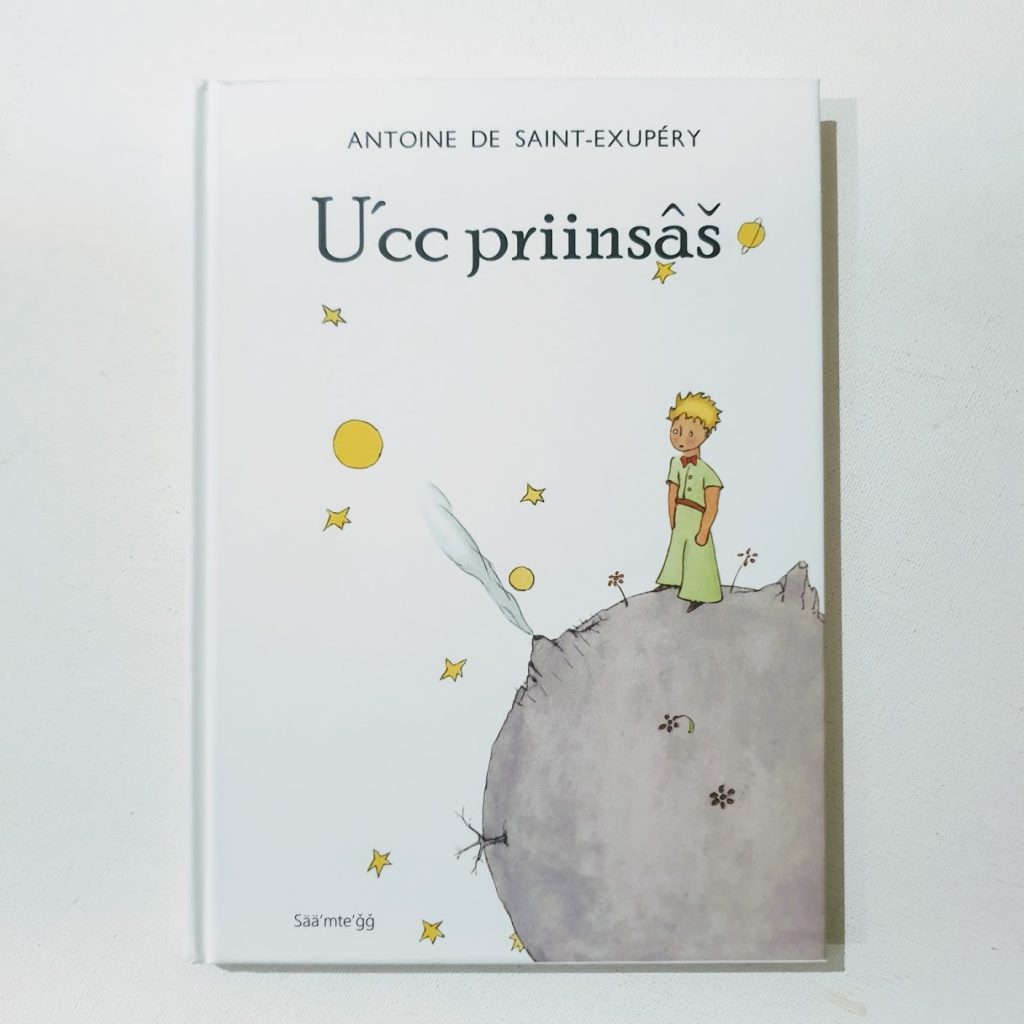
Úcc Priinsâš — in Skolt Sami language.
Skolt Sámi is one of the Sámi languages, belonging to the Finno-Ugric branch of the Uralic language family. It is spoken by the Skolt Sámi people, primarily in the northeastern part of Finland, near the borders with Russia and Norway, as well as in small communities in Norway and Russia. Skolt Sámi, like other Sámi languages, is an important part of the cultural identity of its speakers, encompassing a rich oral tradition, knowledge of the natural environment, and traditional practices such as reindeer herding and fishing.
Skolt Sámi has a phonetic inventory that includes sounds not found in many other languages, such as the palatalised sounds and a series of different sibilants. It is known for its unique vowel harmony system and has a distinctive pitch accent system. The language is agglutinative, forming words by adding various affixes to stems. Skolt Sámi has a complex case system for nouns, pronouns, and numbers, including nine grammatical cases that express relationships between words in a sentence. Verbal morphology is rich, indicating mood, tense, person, number, and object. The vocabulary is characterised by its Finno-Ugric roots, with numerous borrowings from Russian, Finnish, and other Sámi languages due to historical contacts. The lexicon reflects the traditional lifestyle and the Arctic environment, with extensive terminology related to reindeer herding, fishing, and nature.
In Finland, Skolt Sámi is recognized as one of the Sámi languages, with specific legal protections and rights for its speakers, including the right to education and services in their language within the Sámi homeland. Skolt Sámi is considered endangered, with a small number of fluent speakers. Efforts to revitalize the language include language courses, cultural programs, and initiatives aimed at encouraging its use among younger generations. Educational materials, literature, and media content are being developed in Skolt Sámi to support these efforts.


